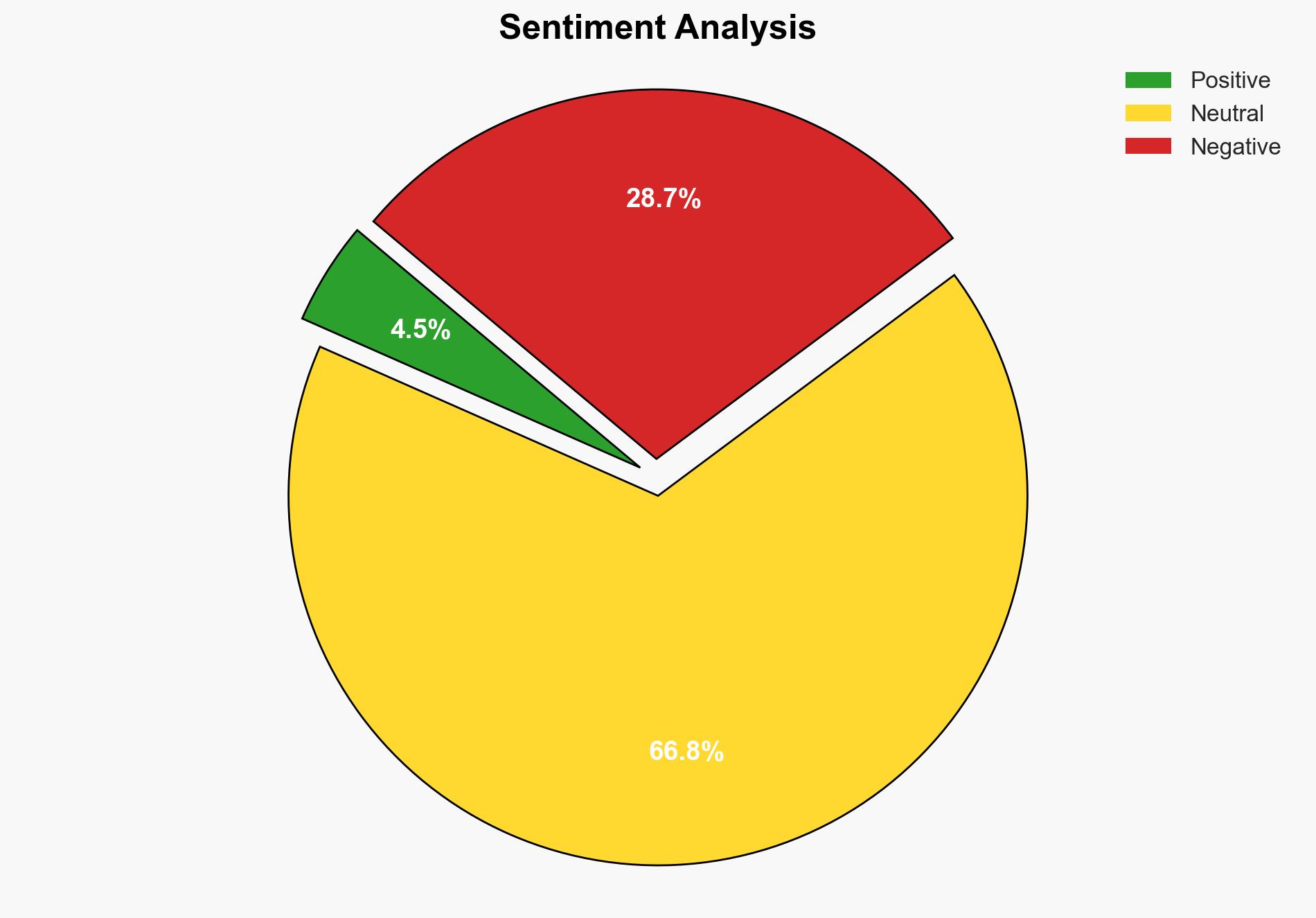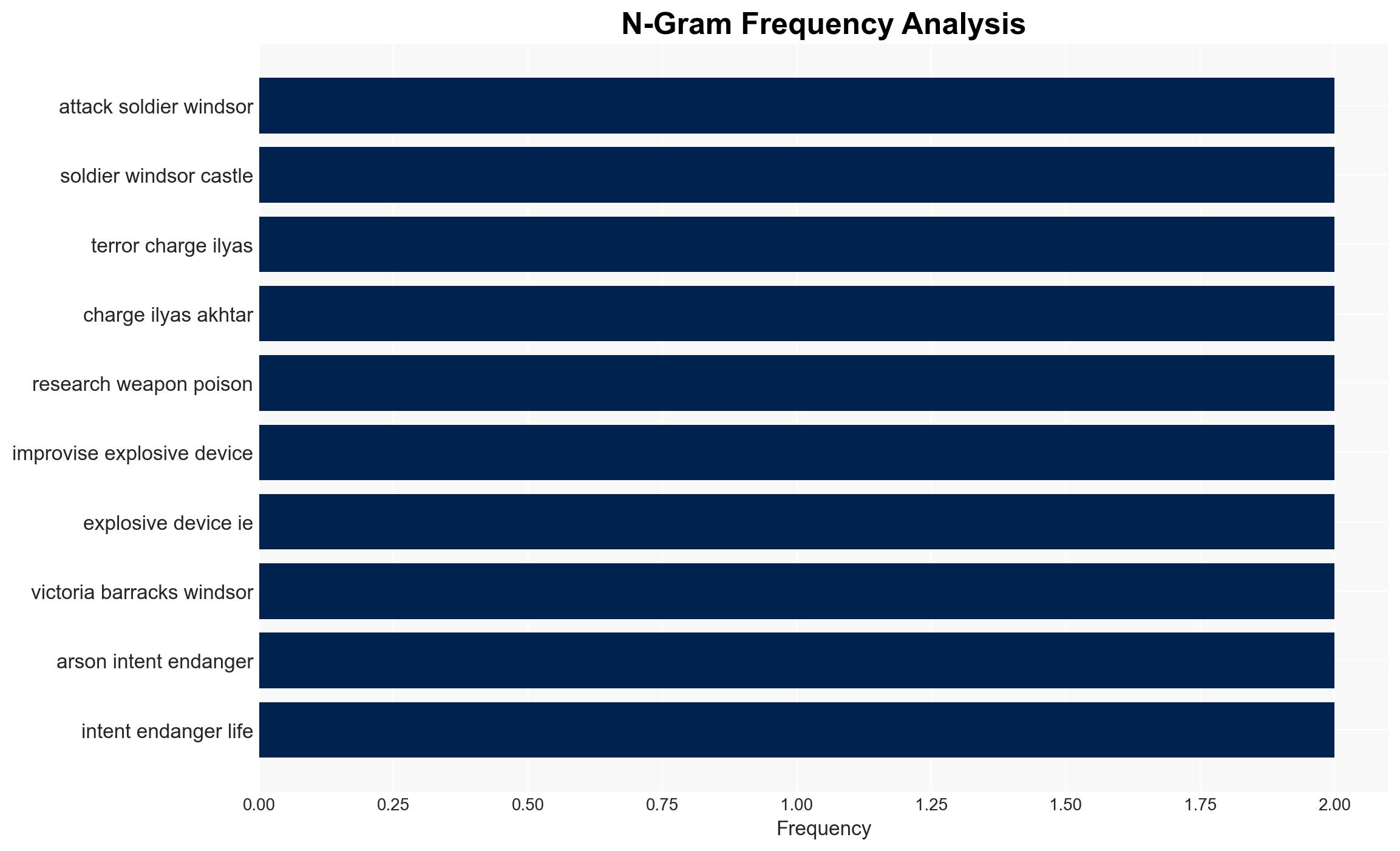Man who plotted to attack soldiers admits terror charges – Sky.com
Published on: 2025-11-14
AI-powered OSINT brief from verified open sources. Automated NLP signal extraction with human verification. See our Methodology and Why WorldWideWatchers.
Intelligence Report: Man who plotted to attack soldiers admits terror charges – Sky.com
1. BLUF (Bottom Line Up Front)
The most supported hypothesis is that Ilyas Akhtar acted as a self-radicalized individual motivated by extremist ideology, primarily influenced by online materials. This assessment is made with a moderate confidence level due to the presence of some uncertainties regarding potential external influences or networks. Recommended actions include enhancing monitoring of online extremist content and increasing security measures around military installations.
2. Competing Hypotheses
Hypothesis 1: Ilyas Akhtar acted independently as a self-radicalized individual influenced by extremist online content.
Hypothesis 2: Ilyas Akhtar was part of a larger network or influenced by external actors who provided guidance or support for his activities.
Hypothesis 1 is more likely due to the evidence of Akhtar accessing online extremist materials and the lack of concrete evidence indicating direct involvement or support from a larger network. However, the possibility of external influence cannot be entirely ruled out, necessitating further investigation.
3. Key Assumptions and Red Flags
Assumptions: It is assumed that Akhtar’s actions were primarily driven by his access to online extremist content. It is also assumed that his activities were not part of a coordinated attack involving multiple actors.
Red Flags: The sophistication of the planned attacks, including the construction of IEDs, suggests a level of expertise that may not be typical for a lone actor. This raises questions about potential training or external guidance.
Deception Indicators: There is no direct evidence of deception, but the possibility of undisclosed contacts or influences remains a concern.
4. Implications and Strategic Risks
The case highlights the ongoing threat posed by self-radicalized individuals accessing extremist content online. There is a risk of similar individuals attempting attacks, inspired by Akhtar’s actions. This could lead to increased security concerns around military installations and public spaces. Additionally, the potential for copycat attacks or escalation by other radicalized individuals remains a strategic risk.
5. Recommendations and Outlook
- Enhance monitoring and regulation of online extremist content to prevent radicalization.
- Increase security measures and awareness around military installations and public spaces.
- Conduct thorough investigations to identify any potential networks or external influences involved in Akhtar’s activities.
- Best-case scenario: No further attacks occur, and security measures effectively deter similar threats.
- Worst-case scenario: Additional radicalized individuals attempt attacks, leading to casualties and increased public fear.
- Most-likely scenario: Increased security and monitoring efforts prevent immediate threats, but the risk of radicalization persists.
6. Key Individuals and Entities
Ilyas Akhtar: The individual who plotted the attack and admitted to terror charges.
7. Thematic Tags
Structured Analytic Techniques Applied
- ACH 2.0: Reconstruct likely threat actor intentions via hypothesis testing and structured refutation.
- Indicators Development: Track radicalization signals and propaganda patterns to anticipate operational planning.
- Narrative Pattern Analysis: Analyze spread/adaptation of ideological narratives for recruitment/incitement signals.
Explore more:
Counter-Terrorism Briefs ·
Daily Summary ·
Support us
·





